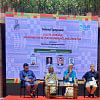How the tariff turbulence is hitting Southeast Asia

The tariff upsurge initiated by US President Donald Trump, notably against China, has been viewed as a protectionist strategy to safeguard American jobs and trade deficits. Like a stone thrown into a pond, the US tariffs have sent ripple effects far beyond the borders of the US. The economies of the Global South are the most affected, including many countries in Asia, Latin America, and Africa, with emerging markets, export dependencies, and developing infrastructures. The tariff turbulence, created due to the imposition of high tariffs by Donald Trump on China, has disrupted the economic stability and development trajectories of countries in ASEAN. These economies are not bystanders in global trade tensions; they are intensely involved in global pricing and the global value chain. Nevertheless, Southeast Asian economies are now being squeezed by Chinese exports on one hand and US tariffs on the other. Chinese goods that were originally targeted for the US markets now have to find new markets because of the US imposition of high tariffs on Chinese exports. And the obvious markets are in Southeast Asia. Therefore, when titans clash, the tariff turbulence hits ASEAN.
According to an article co-authored by former Indonesian Minister of Trade Mari Pangestu, Southeast Asia is about to be hit by a tsunami of cheap Chinese goods. A high influx of Chinese goods into the Indonesian market will adversely affect the job market as well as the manufacturing industries of Indonesia. China has a massive comparative advantage in textile manufacturing industries due to its substantial technological command, which makes it almost impossible for Indonesian textile industries to compete with China. For instance, the dumping of cheap Chinese fabric in Indonesia is often cited as one of the main reasons behind the decline and subsequent closure of Indonesian textile giant Sritex on March 1. Thus, Indonesia faces the biggest challenge in its domestic market from the dumping of Chinese goods.
US tariffs on Chinese goods will also have a hostile impact on Malaysia's solar panel manufacturing industry. Although the US was initially a stronghold of solar module manufacturing, things changed in 2010 when China acquired a comparative advantage, leading to the shutdown of many US solar panel manufacturing plants. The Biden administration has tried to support this industry through subsidies and announced tariffs on solar panel imports from Southeast Asia of up to 271 percent, citing anti-dumping and anti-subsidy grounds. These tariffs have been increased further under the Trump administration. As a result, many of China's leading solar manufacturing companies are closing or cutting back the operations of their plants in Malaysia. China has also announced the shutdown of solar panel manufacturing operations in Thailand and Vietnam. Experts say that Chinese exports have already put some Malaysian industries out of operation, and US tariffs will have a further detrimental impact. Some of the tariff exemptions can partially protect semiconductors, which are Malaysia's largest export category to the US. Nonetheless, new tariffs will still negatively impact many other Malaysian industries such as furniture, textiles, rubber, plastics, etc.
According to Chinese customs data, China's largest export market in 2023 was ASEAN, with an annual value of $523.7 billion. Since the Chinese economy is not growing as fast, China needs to increase its exports and investment in ASEAN. However, rising Chinese exports are exerting significant pressure on ASEAN's domestic manufacturers. Thus, the relationship between China and ASEAN is becoming more complex.
Southeast Asian countries are also experiencing high imports of various low-cost Chinese products through Chinese e-commerce giants such as Temu, Shein, and apps like Lazada, owned by Alibaba, which compete extensively with local manufacturers. The range of Chinese commodities that Malaysian consumers can buy has been growing. Apart from the consequences of US tariffs on China, challenges such as overcapacity of Chinese manufacturers, the slowdown of the Chinese economy, and reduced consumer spending in ASEAN have led to increased exports of Chinese products to significant parts of Southeast Asian markets.
To address this situation, Indonesia, ASEAN's largest economy, is strengthening its anti-dumping legislation. Moreover, the Indonesian government is looking to impose duties of up to 200 percent on Chinese imports. It has already banned e-commerce firm Temu over fears that its small enterprises could be destroyed. Meanwhile, Temu suspended operations in Vietnam in December 2024, amid a crackdown on e-commerce platforms. In Thailand, 58 products, including steel and furniture, have been identified as targets for anti-circumvention duty. To manage low-cost imports and protect local manufacturers, Thailand introduced a seven percent VAT on imported goods below $40. This has led to a 20 percent reduction in imports in this category, particularly from China.
In 2024, the US overtook China as Southeast Asia's largest export market. However, access to US markets is under greater threat under the current Trump administration. US decisions may give global companies more reasons to increase investment in Southeast Asia due to their stable and growing domestic markets, increasing income per capita, and business-friendly atmosphere towards all parties. According to World Bank and IMF projections, ASEAN as a whole is likely to grow faster than China over the next three years due to its growing economies. Moreover, ASEAN economies have attracted Chinese overseas investment for a variety of reasons, including proximity, FTAs, historical relations, and Chinese support regarding new technology, capital, and trading partnership. Despite the advantages, a high influx of Chinese goods into the Southeast Asian market will heavily affect local manufacturers, resulting in large-scale job losses and the shutdown of local infant industries, leading to trade friction with China. Therefore, with pressure from both superpowers (the US and China), should Southeast Asia be optimistic about its economic growth in 2025?
Tamanna Tabassum is assistant professor at the Bangladesh Institute of Governance & Management (BIGM).
Views expressed in this article are the author's own.
Follow The Daily Star Opinion on Facebook for the latest opinions, commentaries and analyses by experts and professionals. To contribute your article or letter to The Daily Star Opinion, see our guidelines for submission.

 For all latest news, follow The Daily Star's Google News channel.
For all latest news, follow The Daily Star's Google News channel. 










Comments